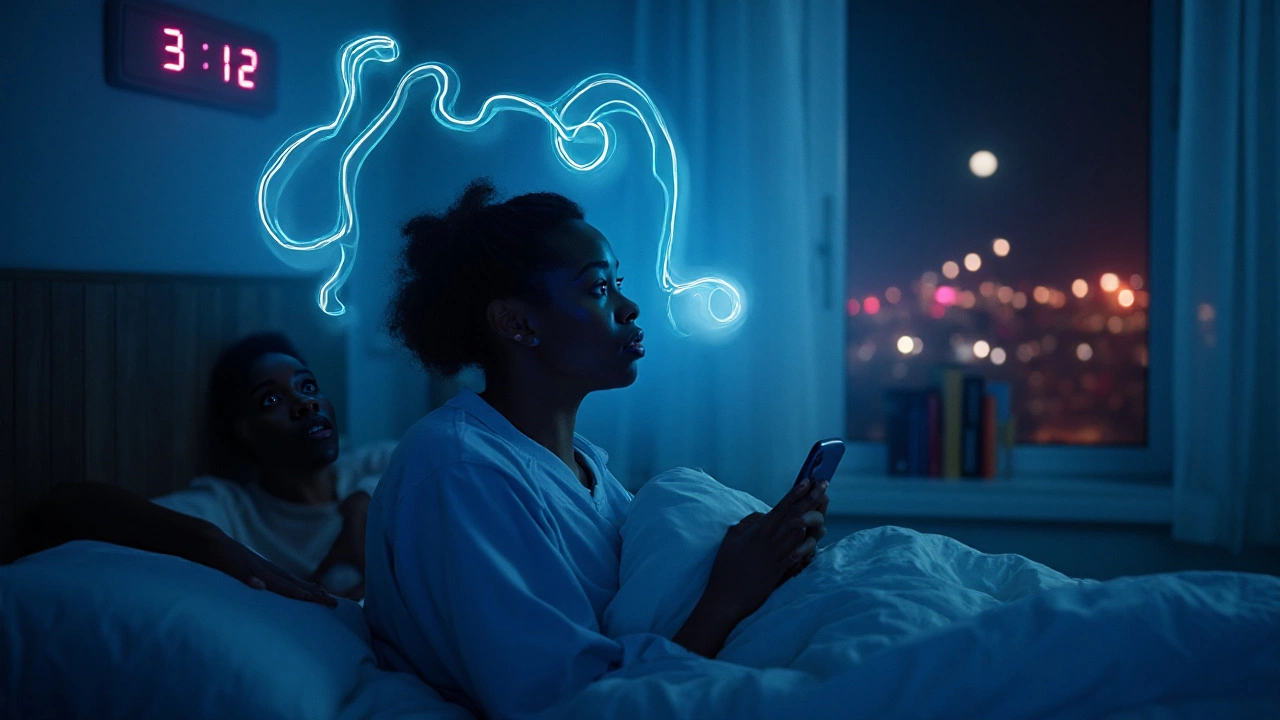
Sleep Disorders and Anxiety: Causes, Signs, and Evidence‑Based Fixes
Struggling with sleepless nights and racing thoughts? Learn how sleep disorders and anxiety fuel each other and what actually works to break the cycle.
If you’ve ever woken up feeling exhausted despite a full night’s rest, sleep apnea could be the culprit. It’s a breathing disorder where the airway collapses or narrows during sleep, causing brief pauses in breathing. Those pauses can happen dozens of times an hour, breaking up your sleep cycle and leaving you tired all day.
There are two main types. Obstructive sleep apnea (OSA) is the most common and happens when throat muscles relax too much. Central sleep apnea (CSA) is less common and involves the brain not sending the right signals to keep you breathing. Both types can raise the risk of high blood pressure, heart disease, and even accidents caused by daytime drowsiness.
Typical clues include loud, choking snoring, gasping for air at night, and morning headaches. If you notice yourself dozing off during meetings, while watching TV, or even while driving, that’s a red flag. Risk factors range from excess weight and an enlarged neck to age, male gender, and family history. Smoking and alcohol can worsen the condition by relaxing throat muscles even more.
A sleep study—either at a clinic or at home with a portable monitor—is the gold standard for diagnosis. The test records breathing patterns, oxygen levels, and heart rhythm to pinpoint the severity of the apnea. Results are scored on an AHI (apnea‑hypopnea index) that tells you how many events happen per hour.
The most effective first‑line treatment is CPAP (continuous positive airway pressure). A mask delivers steady airflow, keeping the airway open while you sleep. If the mask feels uncomfortable, a heated humidifier or a different mask style can help.
Oral appliances are a solid alternative for mild to moderate OSA. They reposition the lower jaw forward, which widens the airway. Surgery—such as uvulopalatopharyngoplasty (UPPP) or nasal reductions—might be considered when other options fail.
Lifestyle changes can make a big difference. Losing even a modest amount of weight often reduces the severity of apnea. Sleeping on your side instead of your back prevents the tongue from falling back and blocking the airway. Avoid alcohol and sedatives before bedtime, as they relax throat muscles further.
If daytime sleepiness persists despite a well‑fitted CPAP, doctors sometimes prescribe wake‑promoting meds like modafinil. Our Modafinil buying guide walks you through safe online options and what to discuss with your doctor.
For people with asthma or other breathing issues, inhalers such as albuterol can help keep the lower airways clear, though they don’t treat apnea directly. Understanding how different meds affect breathing can be useful, especially if you’re managing multiple conditions.
Regular follow‑up appointments are key. Your doctor will review CPAP data, check for mask leaks, and adjust pressure settings if needed. Many devices now sync with mobile apps, letting you track usage and troubleshoot problems on the go.
Bottom line: sleep apnea is manageable with the right tools and habits. Start by recognizing the signs, get a proper sleep study, and explore treatment options that fit your lifestyle. Better sleep means sharper focus, lower health risks, and more energy for the things you love.

Struggling with sleepless nights and racing thoughts? Learn how sleep disorders and anxiety fuel each other and what actually works to break the cycle.